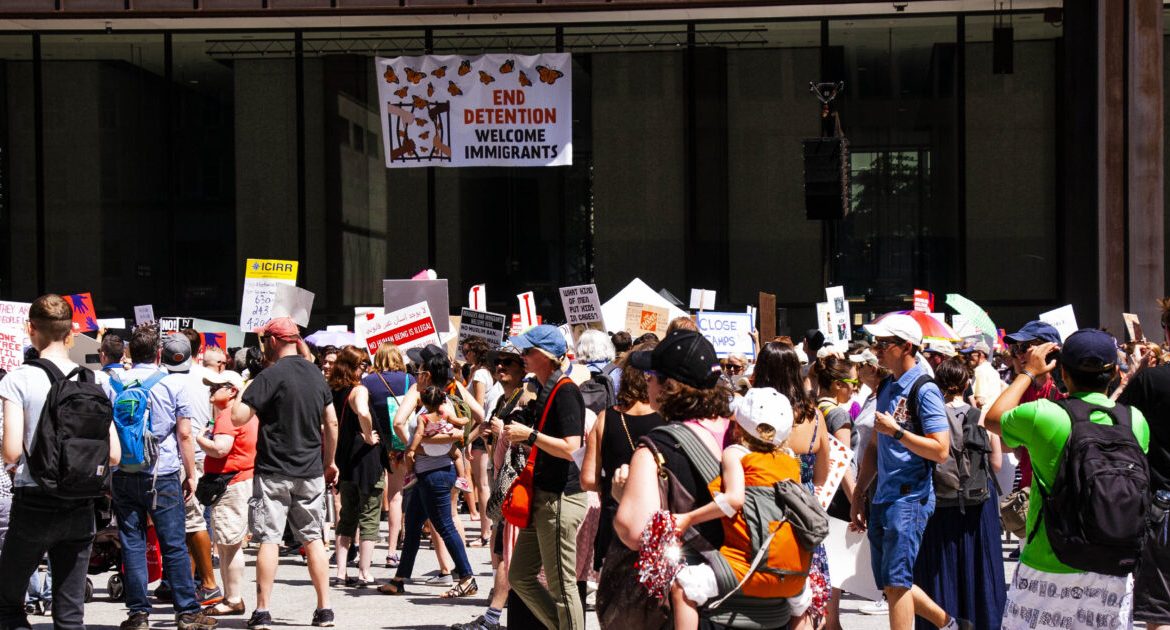
Chicago Mayor’s Order to Resist ICE: “Protecting Chicago Initiative” Makes the City More Dangerous


Chicago Mayor Brandon Johnson signed an executive order on Saturday, August 30, 2025, called the “Protecting Chicago Initiative,” in response to anticipated federal immigration raids and the possible deployment of the National Guard by the Trump administration.
Ironically, he believes he is protecting Chicago by sheltering illegal aliens, including those with criminal histories, and by refusing to support law enforcement efforts. How this makes the city safer remains unclear.
The order prohibits the Chicago Police Department from assisting federal authorities with civil immigration enforcement, including patrols, traffic stops, and checkpoints, and bars collaboration with military personnel on local police duties. It also requires federal officers to follow municipal policies, such as banning the use of masks to conceal identities.
The directive further instructs city departments to “pursue all available legal and legislative avenues to resist coordinated efforts from the federal government” that may infringe on the rights of Chicago residents.
This raises the question of whether illegal immigrants should be considered residents, what rights they possess, and whether they are entitled to protection from federal law enforcement. No comparable program exists to shield American citizens who commit crimes from federal officers.
White House spokesperson Abigail Jackson accused Mayor Brandon Johnson of suffering from “Trump derangement syndrome,” after Johnson called the administration “out-of-control” and accused the president of acting “outside the bounds of the Constitution.”
The mayor makes these claims, but immigration enforcement is not “outside the bounds of the Constitution,” and an administration enforcing existing laws is not “out of control.” What is out of control are Chicago’s illegal immigration and violent crime problems, precisely why stronger enforcement is needed.
Chicago has maintained sanctuary city policies for nearly 40 years, beginning with Mayor Harold Washington’s 1985 executive order. The current framework is the “Welcoming City Ordinance,” enacted in 2006, expanded in 2012, and tightened in 2021 to eliminate all cooperation with ICE. At the state level, Illinois passed the Trust Act in 2017, extending sanctuary protections statewide and prohibiting local officials from inquiring about immigration status or assisting in federal enforcement.
Illinois is home to about 500,000 illegal immigrants, including 30,000 DACA recipients and tens of thousands of recent arrivals. Since August 2022, roughly 51,000 migrants from the southern border have settled in Chicago, adding major costs for taxpayers.
By the end of 2025, the state is projected to spend $2.5 billion on migrant services, with $2.84 billion already spent between fiscal years 2023 and 2025. Healthcare alone exceeded $1.6 billion by July 2024, overshooting 2023 projections by more than $400 million.
State Senator Andrew Chesney noted an 821% increase in migrants listing Illinois addresses between 2021 and 2023. He argued that Governor JB Pritzker has prioritized making Illinois the “most welcoming state in the nation” for non-citizens, pointing to policies such as free healthcare and expanded taxpayer-funded services. When Pritzker took office, spending on non-citizen programs was only a few million dollars a year; it has since grown to billions annually.
Chicago itself is estimated to have 400,000 illegal immigrants and has spent $574.5 million since August 2022, nearly $300 million of it in direct costs. The city’s 2025 budget sets aside another $40 million for the One System Initiative, which funds shelters for migrants and the homeless. Nationally, the Federation for American Immigration Reform (FAIR) estimates the annual fiscal burden of illegal immigration at $115.6 billion, a 30% jump since 2017.
Chicago continues to struggle with violent crime. The city has led the nation in murders for 13 consecutive years; in 2024, its murder rate per capita was three times higher than Los Angeles and nearly five times higher than New York City. Since January 1, Chicago has recorded 147,899 crimes, yet arrests were made in only 16.2% of cases. More illegal guns are seized in Chicago than in New York and Los Angeles combined.
Chicago’s crime reporting has also faced scrutiny. Investigations by Chicago Magazine and The Economist in 2014 and 2015 revealed irregularities in CompStat data, while an audit by the city’s Office of the Inspector General found widespread problems with accuracy.
According to Chicago Magazine, police superiors have pressured officers to under-report crime by misclassifying or downgrading offenses, consolidating multiple incidents into single reports, and discouraging residents from filing complaints. Because the Chicago Police Department counts data differently from other cities, the FBI often excludes its statistics from national crime reports.
Illinois and other sanctuary jurisdictions defend their policies by citing Supreme Court rulings that Congress cannot compel states to govern according to federal instructions. The main statute in question, 8 U.S.C. § 1373, prohibits state and local governments from restricting communication with the Department of Homeland Security about an individual’s immigration or citizenship status, and also bars rules preventing such information from being maintained.
However, legal experts emphasize what the law does not do: it does not require state or local authorities to collect immigration status information, nor does it prevent them from limiting such collection. They note that nothing in § 1373 obliges local officials to comply with federal immigration commands, and that under the Tenth Amendment the federal government cannot “commandeer” state and local officers to enforce federal programs.
Several courts have found that 8 U.S.C. § 1373 unlawfully interferes with state and local authority. Under current interpretations, sanctuary jurisdictions argue they have a constitutional right to limit participation in federal immigration enforcement. This protection rests on the Tenth Amendment, with the Supreme Court affirming that the federal government cannot “commandeer” state or local officials to enforce federal directives, and federal courts consistently striking down attempts to force states to use their resources for that purpose.
At the same time, laws make it illegal to harbor, aid, or abet fugitives or criminal suspects. The Trump administration’s Justice Department used this argument to compile a list of sanctuary jurisdictions and file lawsuits against cities such as Chicago, contending that local policies obstruct federal law.
Attorney General Pamela Bondi warned that “sanctuary policies impede law enforcement and put American citizens at risk by design.” While courts have rejected federal efforts to compel compliance, critics maintain that sanctuary policies shield criminals, including felons, fugitives, and individuals with deportation orders, raising the question of whether states like Illinois are effectively harboring offenders in violation of federal law.
For Illinois specifically, the question has to be asked if harboring criminals is consistent with the stated intent of the Protecting Chicago Initiative.
The post Chicago Mayor’s Order to Resist ICE: “Protecting Chicago Initiative” Makes the City More Dangerous appeared first on The Gateway Pundit.
